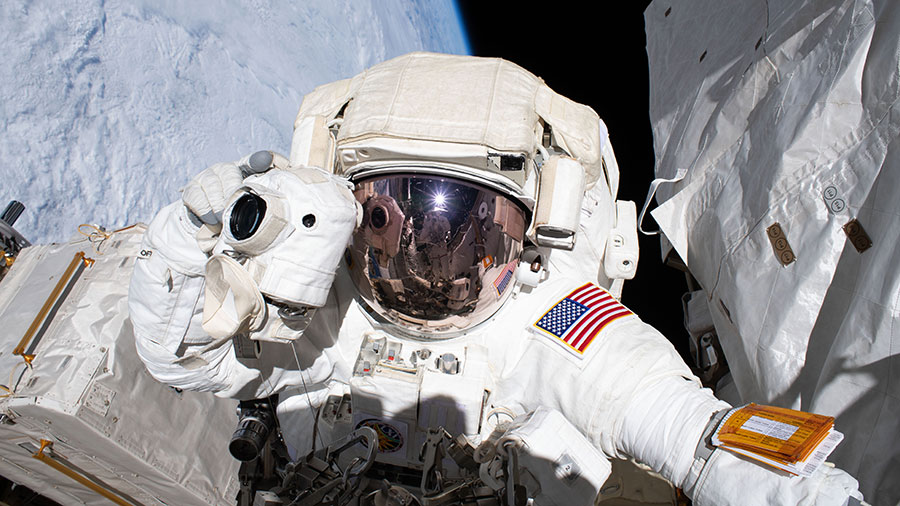
All seven members of the Expedition 70 crew spent Wednesday continuing its space biology research and maintaining the upkeep of the International Space Station. The orbital septet will also observe the Thanksgiving holiday and share a traditional turkey meal aboard the space laboratory.
Astronauts Jasmin Moghbeli, Satoshi Furukawa, and Andreas Mogensen kicked off the day with a periodic health evaluation checking each other’s temperature, blood pressure, pulse, and respiratory rate. The trio also took turns using an otoscope examining their ear canals and eardrums. Doctors are constantly monitoring how living and working in microgravity affects an astronaut’s health.
Afterward, NASA’s Moghbeli processed liver stem samples inside the Life Science Glovebox for the Space AGE investigation exploring regenerative medicine technology. Furukawa from JAXA (Japan Aerospace Exploration Agency) worked in the Kibo laboratory module’s airlock removing lithium-ion batteries and installing research gear to be exposed to the space environment. Mogensen from ESA (European Space Agency) wore a specialized vest filled with sensors monitoring his heart and breathing for the Cardiobreath blood pressure study.
NASA astronaut Loral O’Hara performed orbital plumbing tasks in both the station’s Tranquility module and the SpaceX Dragon Endurance spacecraft. She then filmed a video for students on Earth demonstrating how to use a microscope in the microgravity environment of the space station.
In the orbiting lab’s Roscosmos segment, five-time station visitor and cosmonaut Oleg Kononenko swapped out life support and electronics gear. He also joined cosmonaut Nikolai Chub and tested communications with the Progress 84 cargo craft that is due to undock from the Poisk module and depart at the end of the month. Chub also partnered with Flight Engineer Konstantin Borisov for abdomen scans using an ultrasound device after breakfast to learn how microgravity affects the digestive system. Borisov later worked on ventilation systems in the Rassvet module.
On Thursday, the entire seven-member crew will take the day off, relax, and enjoy a hearty meal. The seven crewmates from four countries are due to enjoy a Thanksgiving feast with items such as turkey, duck, quail, seafood, and cranberry sauce. Treats awaiting the crew include chocolate, pumpkin spice cappuccino, rice cake, and mochi. Crew preference is also considered when planning festive meals in space.
Learn more about station activities by following the space station blog, @space_station and @ISS_Research on X, as well as the ISS Facebook and ISS Instagram accounts.
Get weekly video highlights at: https://roundupreads.jsc.nasa.gov/videoupdate/
Get the latest from NASA delivered every week. Subscribe here: www.nasa.gov/subscribe

